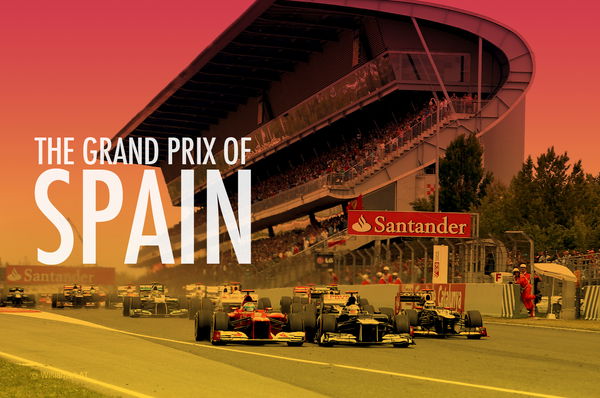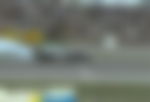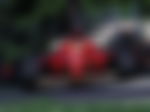

The F1 circus moves to the first European race of the season at the Circuit de Barcelona-Catalunya in Spain this weekend.
Regarded by many as a technical circuit, Catalunya is appreciated by Formula One veterans and pundits alike because of its nature which lays greater emphasis on overall balance of the car but is deemed to be a boring track by fans because it provides less overtaking opportunities.
This doesn’t mean that Spain has not been privy to good racing and on the contrary, the Spanish Grand Prix has provided some intense battles and nail biting races which still continue to hold fans in awe.
ADVERTISEMENT
Article continues below this ad
So here’s the 5 finest Spanish Grand Prix of all time.

5. 2012 Spanish Grand Prix
2012 remains one of the most amazing F1 seasons the sport has seen of late, with 6 world champions lining up with Spain resulting in a fifth different winner from a fifth different team in the first five races. That had only happened once in the history of the sport, back in 1983.
Following criticism over the extreme sensitivity of their tyre compounds, tyre supplier Pirelli announced that they would be providing teams with the silver-banded hard compound and yellow-banded soft compound for the Spanish Grand Prix, as opposed to the soft and medium tyres they had supplied for previous races in the season.
26 year-old Pastor Maldonado had started on pole following Lewis Hamilton’s exclusion from qualifying after a fuelling issue on Saturday, but no one had seriously expected him to be able to hang on to the race lead for long, never mind complete the job.
Even if he could keep his nose in front for a while, Williams was bound to fail, as they have so often in recent years. Maldonado, it seems, is made of sterner stuff. This was an impressively mature win in which Maldonado barely put a wheel out of place, fending off the challenge of home favourite Alonso in the Ferrari before pulling away towards the end of the 66 laps.
It appeared that the more experienced Alonso would eventually regain the lead, but Maldonado withstood the pressure and eventually Alonso decided to settle for second, rather than risk losing any more traction on his tyres. Räikkönen’s late surge proved insufficient to take second place.
4. 2001 Spanish Grand Prix

via Imago
4. 2001
Most memorable moments do not always has to be splendid ones. Sometimes a heartbreaking incident also leaves a lasting impact and gets imprinted in memory. The 2001 Spanish Grand Prix held at Catalunya is one such race.
Coming into the race, Schumacher and Coulthard both were tied on points. Ferrari had been the dominant partnership with Schumacher while Coulthard was leading Mclaren’s challenge. Michael Schumacher clinched his fourth pole position of the season with a time of 1:18.201. He was joined in the front row by Häkkinen who was less than one-tenth of a second behind.
The battle for the front was between the maestros – Schumacher keeping Hakkinen behind him as they duelled closely through to the first round of pit stops. The gap between these two veterans constantly hovered around 3 seconds as Hakkinen tracked Schumacher and never let him get out of sight. The tactic of staying on track a bit longer would ensure less downtime while refilling the tank.
The plan worked for the Finn and the McLaren team, as he managed to stay six laps longer. Those six laps were enough to build a lead in excess of 26 seconds as he came in to his final tyre and fuel stop.
In the closing laps, Häkkinen increased his deficit over Michael Schumacher to over 40 seconds, and it appeared that the McLaren driver would win the race comfortably. However, as Häkkinen started the final lap, his engine failed without warning, and was forced to coast around the circuit before pulling off at turn seven. Michael Schumacher was thus promoted into the lead, which he held to take his third victory of the season. Montoya likewise claimed the first Formula One podium of his career, with second position. Villeneuve took the final place on the podium.
A driver like Schumacher would have loved a fight, however, equally he was philosophical about these elements like luck in racing. On that Sunday, 29th April 2001, the luck went his way and like he said, you lose some, you win some.
3. 1994 Spanish Grand Prix
The 1994 Spanish Grand Prix was a very tough race when it was held on 29 May 1994. Not even a month had passed since Senna’s death. The whole F1 fraternity was still in shock and trying to recover. After all, the show must go on. The race was much harder for Damon Hill who inherited the lead driver position within the team and the responsibility to lift up the morale of a battered Grove based outfit.
This was the first race for the newly formed Grand Prix Drivers Association (GPDA). Several top level names, including Michael Schumacher, Damon Hill, and Gerhard Berger, were instrumental in the setup and running of the GPDA, and they took the decision to install a temporary chicane at the Nissan corner, to attempt to slow the cars down before the La Caixa Hairpin. This was an attempt to improve safety, as well as limit speeds around the track, as the Nissan corner was generally taken at near flat-out speeds.

via Imago
1994
Qualifying was a normal affair as Schumacher took the lead by half a second from Damon Hill. Schumacher led from pole position at the start of the race whilst Barrichello and Berger collided at the first corner.
While Williams notched up their first victory of the season, and first after the death of Ayrton Senna, championship leader Michael Schumacher finished a strong second, despite being stuck in fifth gear for most of the race. Knowing that he had a major problem, he managed to make a pitstop (and get away from the pit stop in 5th gear), and as the race unfolded gave nothing to the leading Hill’s pace. He had to change his driving style to find new trajectories and corner apexes, and his past experience as a World Sportscar driver helped him to do so. The car became stuck in fifth, yet despite a few slow laps he soon figured out how to drive the car quickly and lap comfortably within two seconds of his previous pace.
He could not hold off Hill at that speed, though, who sailed by on lap 46. Hakkinen was set to pass him as well until the McLaren’s Peugeot engine let go. This let a delighted Mark Blundell into third place in his Tyrrell-Yamaha.
The race was a landmark in two ways. It gave Williams their first win since the death of Senna and a vital morale boost that would drive them on to challenge for both 1994 titles and ultimately win the constructors.
It also began the definition of the man who would succeed Senna to become one of the sport’s greatest.

via Imago
2. 1996
2. 1996 Spanish Grand Prix
A casual observer may not have enjoyed the 1996 Spanish Grand Prix – a lone red Ferrari putting an ever increasing distance between itself and its pursuers. But to the purest it was spellbinding.
1996 had marked a new era for Ferrari- F310, its first V10 powered car and the two time defending world champion Schumacher joined the team in what was gonna result in the sport’s most successful partnership ever.
But this was not the case from the very beginning, Ferrari was struggling in the wake of competition from Williams and reliability problems meant Schumacher retired thrice out of the last 6 races.
But come Spain, no one knew a brilliant race was in tow for Schumacher. The Spanish GP was held at circuit de Catalunya that year. He had come third in the qualifiers with the Williams taking the front row. On Sunday though it rained cats and dogs. Schumacher took a calculated gamble, he told the team he wanted a full wet set-up with light tanks and two stops.

At the race, Hill was slow to get out of the blocks but the two Ferraris were even slower so Villeneuve was able to get into the first corner ahead with Alesi behind him and Damon Hill third. Behind Eddie was Schumacher in 7.
When Hill hit the wall, the Schumacher fans cheered loudly, but they would be doing more cheering in the laps ahead as Michael carved past Berger on lap five, Alesi on lap nine and Villeneuve on lap 12. Once in the lead he simply drove away from the field, setting a string of fastest laps which saw his lead go from 2.9s on lap 12, to 6.6s on lap 13; 10.5 on lap 14; 14.9s on lap 15 and so on. His 14th lap would stand as the fastest lap of the race – a 1m45.517s – which would be 2.2secs faster than any other lap by any other driver in the course of the afternoon.

via Imago
1. 1986
1. 1986 Spanish Grand Prix
The 1986 spanish Grand Prix was one of the most spell bounding, hair pulling and at the edge of your seat Formula One finishes the sport has produced so far. Well for firsts, it ticks a lot of checkboxes. The race featured the sport’s mystical hero Senna, the brute and aggressive Mansell and the sport’s 3 closest finish to date.
ADVERTISEMENT
Article continues below this ad
The day before the race, Senna put his Renault powered Lotus to pole while contenders for the win i.e. Mansell and Prost lined up on the 2 row. The race held at Jerez started with the Brazilian leading from pole but the first half went in an exciting battle for lead between Senna, Mansell and Prost.
On lap 34, Mansell passed Piquet for 2 and later Senna, but with 10 laps to go he had to pit for new tires. By this time, Prost had closed in too.
Mansell emerged from the pits and went on to close down the gap. With eight laps to go, Mansell was third behind Prost, almost 20 seconds behind Senna. It took him just half a lap to overtake Prost. With two laps to go, he was 5.3 seconds adrift. One lap later, he closed that down to just 1.5 seconds.
ADVERTISEMENT
Article continues below this ad
At the final hairpin Mansell under braked to overtake but was too far. Both raced for the chequered flag with Senna crossing the line only 0.014 seconds earlier.
A win separated by mere 93 centimeters remains etched in the minds of fans till date.
ADVERTISEMENT
ADVERTISEMENT
ADVERTISEMENT
ADVERTISEMENT

